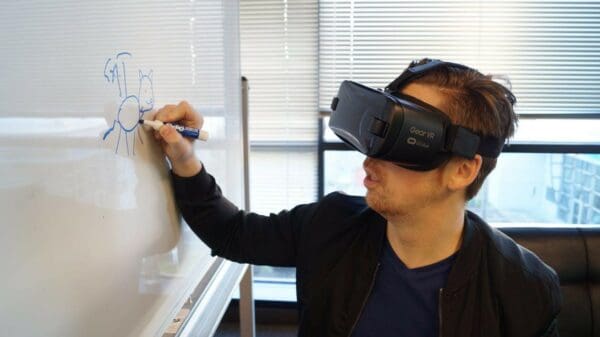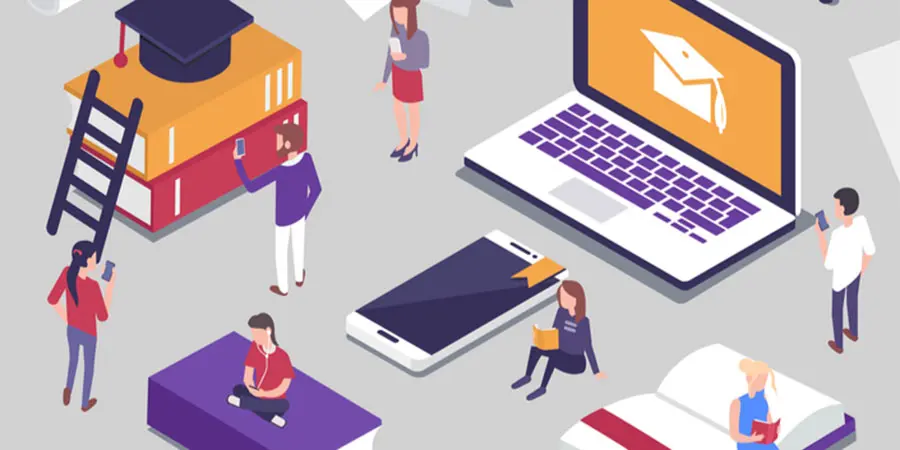Modern world provides numerous opportunities in the fields that have a reputation of being highly challenging or closed. In other words, doors get open for everyone even to the most exclusive and desirable professions and academic circles. And this all become possible with technologies. Post-pandemic life is more digitalized than ever, full of exciting opportunities to learn and develop. Let’s have a look at what this fancy tech era brings in terms of education!
How Education Got Digital?
Someone older can probably remember the VHS tapes with educational videos screened at schools to demonstrate complex lab experiments or fascinating science facts. Though not so fancy-looking now, those were the first attempts at new media integration into sacred traditions of chalk and blackboards in schools. The crazy fast development of technologies rapidly brought computers, interactive boards, and digital microscopes to classes.
Educators had done lots of work on modernization of the classical schooling, at minimum to return those portions of students’ attention video games and smartphones had taken away. But not only kids, adults too got access to digitalized education. In today’s economy, it’s not enough anymore to hold to your school diploma or college degree for life. And learning something new while working full time and managing family and social life simultaneously is not easy. Modern technologies try to facilitate this process by bringing education to smartphones and tablets and making it bite-size.
And then COVID-19 happened. What it’s done to the education sphere was a great acceleration. Children and students around the world had to continue learning from home. And many adult employees lost their jobs and had to embrace new qualifications quickly. So, now we are entering the new era of EdTech (Educational Technologies) that uses the most advanced technologies and approaches.
If you’re struggling to catch up with your ongoing education and carrying for your family and day job, you still can get help even without the latest technologies. Internet connection would be enough. We’re talking about getting help in the completion of academic assignments from the best essay writers in the world. Just use a reputable academic writing service to assist you in your studies.
Top 5 Digital Education Trends of 2022
Well, we’re in 2022 and it’s easy to get lost in all the fancy terms and tech innovations. We’ve prepared a brief explainer of the most fascinating and popular directions in digital education now.
Lifelong Learning
This concept may sound either easy or scary, depending on your own educational story. But it’s a new reality for all of us. Studies show that an average adult will change their career 5-7 times during their lifetime. To avoid losing momentum it’s advisable to start learning new trendy skills already now. It decreases the risks of unemployment or current expertise getting obscure in case of another pandemic or rapid market changes.
What lifelong learning has to do with digital education? It is simply not possible without modern technologies. No adult would be able to attend traditional university classes and keep the job and family happy. That’s why most continuing education opportunities are online or in mixed formats.
Blended Learning
Most have heard about online learning, but the blended model is still confusing. Its main goal and advantages are saving time and costs. When on a blended course, a student has learning materials to conquer before the face-to-face lectures and workshops aimed at diving deeper and honing the new skills. Blended learning relies heavily on technologies to keep up with the group dynamic studying online, developing interactive engaging learning material with digital media and simplifying routine tasks for a tutor.
Immersive Learning
Alternative Reality (AR) and Virtual Reality (VR) leave the space of entertainment to serve a better future. Starting from some easy tasks as bringing maps and globes to a three-dimensional world with special goggles and completing with fancy expensive simulators of medical operations to train surgeons. Where the bridge between theory and application always lay, now is a close to real practice with minimized risks. Immersive learning in virtual reality would accommodate all the hands-on professions traditionally struggling from unfortunate expenses on training.

AI
Some of us still get nervous thinking about Artificial Intelligence, suspecting the machines’ taking over the world power. We won’t discard these fears but would ensure you that before any robot riots AI would help lots of schoolteachers and even more struggling students. Today AI is used to provide automatic grading to tests, verify academic papers against plagiarism risks, and help predict better learning paths based on accumulated data.

Blockchain
This technology is not just for the cryptocurrency world. As blockchain allows for almost impenetrable security of cyphered data, in education it could serve for intellectual property safeguards, student’s identity and academic credentials verified and safely stored. For lifelong learners, blockchain technologies offer a trustworthy way to keep track of all the educational activities and achievements throughout life without the need of keeping some digital certificates sent by email. It moves us from being a society partially modern but still paper-relying to a truly digital world. No matter how closely familiar with mentioned concepts and technologies you are, you’ll have to explore them sooner or later. The world is speeding forward on a tech train, so it’s only smart to get used to the many digital opportunities available out there.
